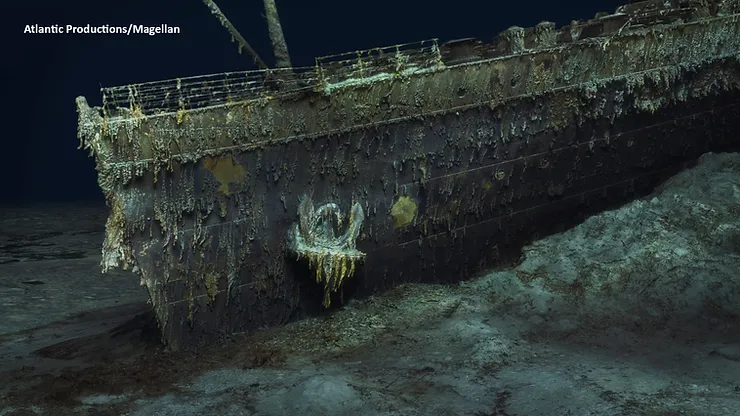By: Victor Zhang
The first-of-its-kind 3D scan of the RMS Titanic has captured immense detail and has given researchers a new way to discover the hidden story of the Titanic. This scan is monumental in excavating the story of the Titanic.
The scan took place during the summer of 2022 by Magellan Ltd, a company that specializes in deep-sea mapping. The mapping was filmed by the British company Atlantic Productions for a documentary, but the release date is not known. According to the educational media site Openculture, “The result was a whopping 16 terabytes of data, along with over 715,000 still images and 4K video footage. That raw data was then processed to create the 3D digital twin. The resolution is so good, one can make out part of the serial number on one of the propellers.’ This achievement shows just how far our technology has progressed, allowing us to study the wreck in detail never before possible.
The Titanic sank on April 14th, 1912 in 2 hours 40 minutes after hitting an iceberg. The ship, which was previously thought to be unsinkable, sank. The bow and stern were separated during the sinking and the two parts settled around 1/3 of a mile apart from one another. While filming the movie “Titanic”, the famous filmmaker, James Cameron, described the splitting of the ship as The Banana Theory.
The remains of the Titanic were discovered on September 1st, 1985 by Robert Ballard, who is an American oceanographer and marine geologist whose pioneering use of deep-diving submersibles laid the foundations for deep-sea archaeology. He is best known for discovering the wreck of the Titanic in 1985. The ship was located about 400 miles south of Newfoundland, Canada. According to Britannica, the wreck is located at the bottom of the Atlantic Ocean, some 13,000 feet (4,000 meters) underwater.” There was around 13,000 feet of water above the Titanic. That was the prime reason the Titanic was so hard to find.
The Titanic sunk over a century ago, and so its remnants are slowly disappearing. There are two main reasons for this phenomenon: one, the saltwater acidity is slowly dissolving parts of the material, and two, a bacteria called Halomonas Titanicae is slowly eating away the iron in the ship’s remains. The ship is predicted to fully disappear by 2050 from these factors. This is why the 3D scan of the Titanic at this moment in time is so valuable. The scan preserves the ship in a way that researchers can study the Titanic without worrying about time or damaging it.
Overall, the Titanic is very important











